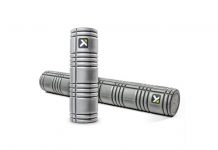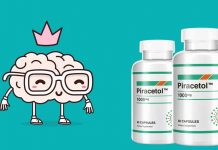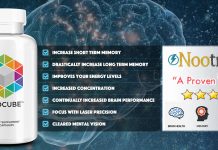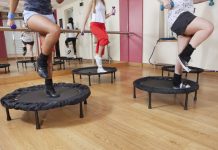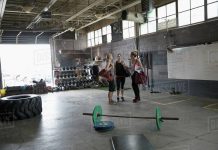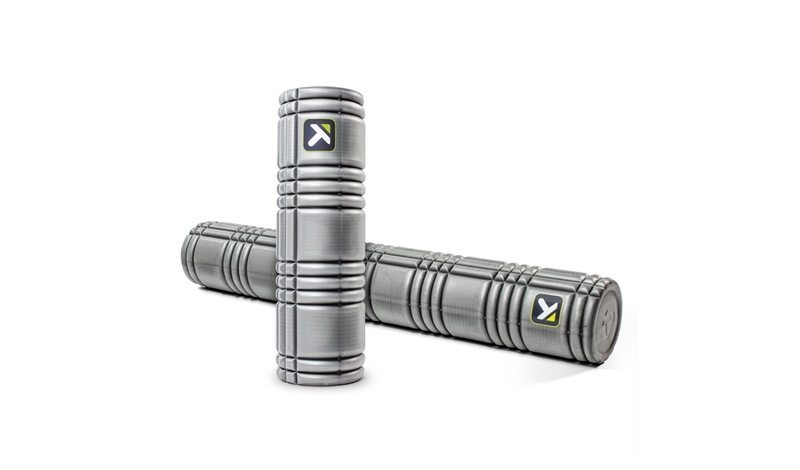
Ironman training is one of the most brutal 12 month journeys you can put your body through. You push your body, in particular your legs, through 2 a day workouts – sometimes up to 8 hours per day, constant soreness, lack of rest and fatigue. The sheer volume of miles and hours of accumulated training take their toll on how you feel, recover and ultimately perform day after day. How do Ironman triathletes prepare their bodies to take this beating day after day? Nutrition, hydration, sleep, massage and foam rolling.
Using a foam roller is one of the most effective methods for quick day to day recovery, reducing soreness and keeping your muscles flexible. I must admit, when I took on the challenge of triathlon and later the full Ironman distance events, I didn’t heed my coach’s advice on foam rolling. As I’ve gotten a bit older, and battled through some injuries, I’ve embrace the fact that consistent foam rolling to aid recovery is minute for minute, dollar for dollar the best bang for your recovery buck.
In this resource, FitnessReport covers:
- The best foam rollers to use
- Why foam rolling is so important for your muscles
- What causes muscle tightness?
- How foam rolling works
- What are the benefits of foam rolling according to science?
- Common injuries that foam rolling helps avoid
- Why some people think foam rolling sucks
- An easy 10 minute foam rolling protocol that I use (almost) every day
The Best Foam Rollers: Fitness Report’s Top Picks
The most important factors when purchasing a foam roller is firmness, size, length, price and quality. I use a hard (high density) basic roller from Amazon basics, but I started on a fairly soft (low density) foam roller when I first got started. My preference is for a high density roller (more durable, better release) in a 18 inch version. The shorter length is better for one leg/one side rolling as it is easier to position your off leg on the floor, without getting in the way. However 12 inch versions are too short for my hamstrings and quads.
Fitness Report Budget Pick: Amazon Basics High Density
Amazon Basics makes a great high density foam roller, which I’ve personally used for over a year. Other brands manufacture essentially the same thing, but Amazon Basics is usually cheaper. It has held up very well with 2 and even 3 times a day use from me (and my kids). This is a cheap pick compared to may high end options of similar quality. Amazon has also added several color combinations and lengths to choose from. Lengths range from 12 inches to 36 inches.
Fitness Report Premium Pick: Trigger Point GRID
Trigger Point makes very good quality foam rollers with a few added features, that, for the right athlete, are worth the higher price point. The main selling point of the GRID is the multi-density outer shell with grid pattern. This allows for a better side to side (shearing) motion on the muscle. In the video below, this shearing motion is discussed. The GRID also comes with a free instructional video. Standard sizes are 13 inches and 26 inches. The longer option is better for 2 legged rolling as opposed to one side at a time.
Fitness Report Low Density Pick – OPTP Pro Roller
If you have never rolled before, or are at a point in your training where you are injured, extremely sore, or tender, then you might opt for a lower density roller. The lower density means that the pressure exerted on you muscles is less and less “pain” will result when you roll. This roller comes in 18 inch or 36 inch versions. For athletes who experience extreme soreness I suggest getting the 36 inch version because you can further decrease the pressure by rolling both legs at the same time as opposed to putting all your weight on one side.
Read on to understand why foam rolling is important and how to do the movements properly.
Why Foam Rolling Is Important
What is Foam Rolling?
Foam rolling is a form of self-massage (self-myofacial release) designed to be applied to large muscle groups with the purpose of releasing muscle tightness and trigger points on a regular basis. Trigger points are specific knots that form in the muscles and refer pain (you feel pain in an area when pressure is such as sore muscles).
A foam roller is a cylindrical tool, usually made of stiff foam or padding. Using a foam roller, an athlete uses body weight to “roll” a particular muscle group over the foam roller, thus compressing and elongating their soft tissue, which releases adhesions in the muscles, generates proper blood flow and keeps the muscles pliable. Think of using a rolling pin to roll out dough on a board!
What causes muscle tightness and trigger points?
Soft tissue breaks down forming adhesions in response to workload. Proper rest is needed to repair the break down. Your training load, duration and intensity have an obvious effect on your muscles. However, tightness in your soft tissue is also affected by your general flexibility and hydration, as well as your daily routines, stress, movement patterns, posture, nutrition and sleep cycles.
Our bodies are designed to adapt, but when we fitness enthusiasts surpass our ability to recover, ill effects tend to stack up. This is why Fitness Report recommends a cross training approach to overall fitness – allowing parts of your body to recover while loading others.
Why Is Foam Rolling Important?
When working out, your muscles, ligaments and tendons contract under stress. Over repetitive and intense contractions, your soft tissues form small knots. Over time, when knots build up and are not properly released, chronically tight muscles occur and lead to chronic soreness and delayed ability to recover from workouts. Foam rolling, and other types of trigger point massage allow you to return your muscles to their natural healthy, supple and elastic state of performance much more quickly than a 60 minute massage (and less costly too).
When used regularly over time and over a rigorous training schedule, your ability to recover is increased, and the amount of soreness you experience post-workout generally decreases significantly.
What’s Happening During Foam Rolling?
Self-myofacial release works by compressing deep layers of tissue to ‘break up’ or relax muscle adhesions and knots. This process restores healthy blood flow that may have been disrupted by the adhesions. The blood flow helps to promote healthy tissue regeneration. It’s kinda like getting bubbles out of a straw.
What are the benefits of foam rolling according to science?
Various benefits come from self-myofacial release. While the science is always evolving, many interesting studies seem to confirm several benefits for recovery. Listed below are several benefits along with the corresponding study (if there is one). For the benefits science has not proven yet, there are robust theories and plenty of anecdotal reports from sore, inflexible athletes like me.
- Enhanced warm up pre-workout
- Better recovery
- Reduced fatigue during exercise
- Reduction of delayed onset muscle soreness
- Increased flexibility
- Short term increase in range of motion
Injury Prevention and Treatment Effects
Foam rolling is most helpful to treat mild to moderate injuries to soft tissue and connective tissues that occur either from overuse or poor range of motion. However, using foam rolling to treat injury is less effective than using it to prevent injury. When used regularly, foam rolling can help prevent or limit:
- Pulled muscles
- IT band syndrome
- Tendonitis
- Sprains
- Plantar faciaitis
- Runner’s knee
- And more!
What Are The Drawbacks Of Foam Rolling
Pain
The number one complaint we hear about foam rolling is that it can hurt. The pain associated with foam rolling is associated with tight, tender muscles rather than the roller or technique itself, and tends to diminish over time as muscles become softer and proper blood flow is restored.
Not Helpful For All Muscle Groups
Because of the mechanics of the rollers themselves, rollers are not useful for small muscle groups such as the hands, feet, forearms, and neck. Superficial muscle groups with broad surface area are best. These groups include the lower/upper legs, buttocks, back, latissimus Dorsi, and hip region.
Improper use
It is possible to use a foam roller the wrong way and aggravate an injury. When some muscles tighten, they do so to protect another area of injury. By releasing that tightness, it is possible to make the injury worse. It is very important to get a proper injury diagnosis before using a foam roller on a current injury.
The best foam rolling protocol – 10 minutes tops
I found this soft tissue protocol form Peter Attia and Jesse Schwartzman, and I love it. The best part is that, in addition to foam rolling, you can extend this protocol for muscle activation and more dynamic preparation. I’ll stick to the soft tissue foam rolling portion here.
Keys to the movements:
- For each muscle group, roll one side of your body then switch, before moving to another muscle group.
- Roll for no more than 40 seconds at a time
- If you feel pain, adjust your body pressure on the roller until you can tolerate it.
Calves
- Relax the toes so your calf is not contracted
- Roll over the back of your lower leg from your achilles to the back of your knee
- Let your toe fall to the outside to roll the outside of your calf
- Pull your toe in to roll the inside of your calf
- Continue to roll over tender areas as needed, then switch legs
Hamstrings
- Begin with roller just above the back of your knee
- Roll entire length from just above the knee to your glute
- Rotate your foot inside and out as you did for your calves to hit different areas of the hamstring
- Go side to side in a shearing motion as well
- Switch sides
Gluteus Maximus
- Cross leg over bent knee and sit on the foam roller
- Lean into your glute, moving back and forth across the roller
- Switch sides
Gluteus Medius
- Uncross your leg and let your hip rotate towards the ground with your knee still bent
- Roll back and forth just under your hip bone protrusion of your lower back
- Switch sides
Quads
- Lay on foam roller, with roller right above your knee, and your elbows on the floor supporting your upper body
- “Walk” your elbows back so the roller rolls over your quad up to your hip
- Adjust your body to get the inside and outside of the quad
- Switch sides
IT Band
In the videos, Jesse says you don’t need to roll the IT band. He’s definitely an expert worth listening to. However, I still roll my IT band. I’ve had IT band issues and foam rolling has seemed to help. It could, of course, be related to improvements in other areas of the leg as Jesse predicts.
- Lay on your side with the roller just above the outside of your knee
- Move along the roller until the roller contacts the bony protrusion of your hip, and repeat several times
- Switch sides
The IT band can hurt, as it did when I first started foam rolling. However, I saw major improvements over time.
Groins
I have a history of tendonitis in my right groin, so I add in this movement
- Lay with your elbows supporting your upper body
- Bend your leg and swing your knee out to the side, placing your leg on the roller. The roller should be perpendicular to the leg.
- Just roll on the belly of the muscle and not high on the tendons
Further Foam Roller Protocol Instruction
There you have it. In just 10 minutes a day, you can speed recovery, get rid of tightness and soreness, and generally get your muscles feeling more limber and refreshed. If you’re not quite getting how to do a certain movement, below are the videos directly from Dr. Attia and Jesse on how to properly foam roll. They also show you how to roll the back, lats and to some other trigger point work.


